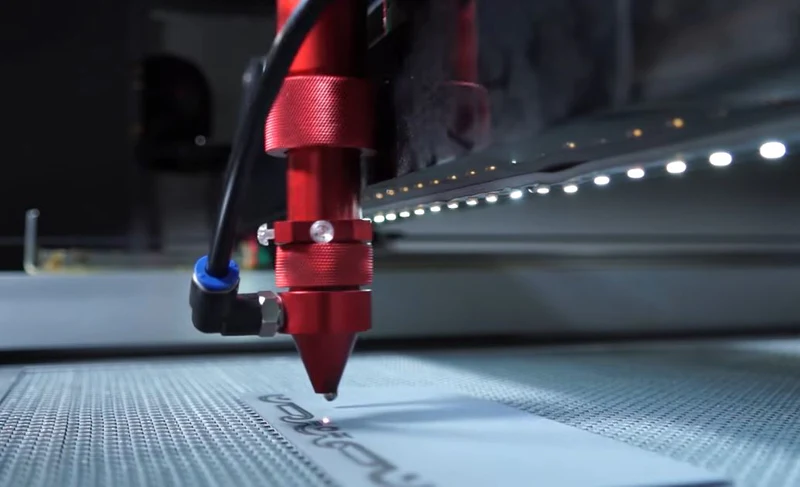C02 laser have traditionally been the laser machines of choice used by job shops due to their consistency of performance in regards to cutting speed, cost of operation and cut quality throughout all ranges of metal thickness. This allows job shops to process a full range of materials at competitive rates.
With the popularity of Fibre Lasers growing rapidly many job shops are considering the benefits they can offer their business with regard to increased efficiency in operational cost and turnaround time. This article will explore the advantages of each laser technology, how they can complement each other in the right setting and how larger volume businesses like job shops can benefit from having both.
Firstly let’s outline the strengths of both Fibre and CO2 lasers and what advantages they offer to the business operation of a job shop.
Benefits of Fibre Laser Technology:
Fibre lasers have been shown to cut faster and are cheaper to operate than CO2 lasers when fabricating thin sheet metal up to 5mm in thickness.
In cutting thin sheet metals, they can cut almost 3 times faster than CO2 lasers and operating costs are typically half of what is required to operate a CO2 due to having much lower electrical consumption and the absence of mirrors that are necessary in CO2 systems. In addition, due to the absence of mirrors and Laser Cutter Brand they require less maintenance. Servicing intervals are typically 50% longer which in turn allows for 50% lower servicing costs. Furthermore they require less consumables to operate and the consumables required are cheaper than the associated CO2 systems.
As the beam produced from the fibre optics is more readily absorbed into the metals, this provides the ability to cut reflective metals such as Copper, Brass and Aluminium whereas cutting these metals with a CO2 laser could damage the machine due to intense back reflection. This provides greater flexibility to take on more expansive work.
Research has shown that approximately 70% of all cutting applications in the flat sheet metal cutting market are in the thin-material range under 5mm thick. This constitutes a large segment of the flat sheet metal market.
Finally fibre laser machines are generally more affordable to purchase than the equivalent CO2 lasers.
Benefits of CO2 Lasers:
The cut quality of a CO2 Laser remains constant throughout all ranges of material thickness whereas a fibre laser whilst being a superior cutter in the thin material range, it starts to lose cut quality once the material thickness exceeds 5mm.
Whilst fibre optics offers performance advantages in the thin material range, CO2 lasers will outperform them once the metal thickness being cut exceeds 5mm.
This holds true in terms of
– Speed of cutting
– Cost per part
– Quality of cut*
* Whilst this may be true when comparing most Fibre Lasers to CO2, in some units the general consensus of cut quality in Fibre may vary. At 2kW IPG’s Fibre Laser units have been show to achieve equal to or superior cut quality to CO2 laser right up to 12mm in mild steel. At this thickness the laser also cut at an equal speed to CO2 and energy consumption per cut part was still lower using the fibre technology.
Furthermore CO2 lasers can cut acrylics and wood which fibre optics cannot, thereby providing greater flexibility to niche industries where the need to cut these materials is in demand.
Benefits of incorporating both technologies:
It is clear that each laser technology offers strengths that can directly complement the other, with fibre providing a greater efficiencies in the thin metal sector (0.5mm – 5mm) and CO2 providing greater advantages in thicker section metals (6mm and above).
Most job shops have traditionally used CO2 lasers exclusively as they provide consistent cut quality and operating costs throughout varying ranges of metal thickness. Given the niche advantages of fibre technology however one can easily deduce the benefits of having a one to greatly enhance the operation of a job shop.
Once a job shop acquires enough ongoing work volume to justify multiple machines it is worth considering a fibre laser as a complement to the existing CO2 currently in use. Reduction in ongoing costs, increased speed of cutting and the ability to cut reflective metals have all been benefits reported by job shops who have already taken advantage of these efficiencies provided by fibre laser machines.


